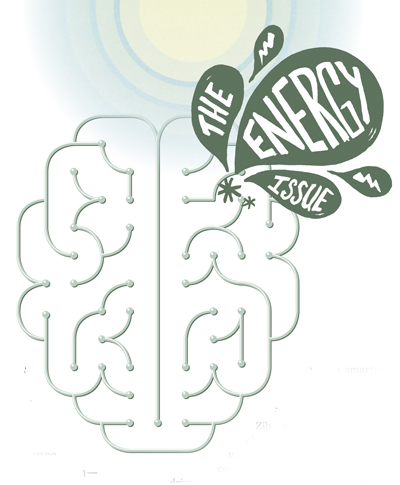 A local company pushes “smart grid” technology
A local company pushes “smart grid” technology
by Lee Stabert
When it comes to radically improving the way we use electricity, there is only so much consumers can do—no matter how much they are willing to sweat or how much caulk they pump into window frames. Our country’s electrical grid was built in the 1950s, and hasn’t changed much since. Unfortunately, the rest of our society—and its energy consumption—have changed quite a bit.
Companies like Viridity Energy, based in Conshohocken, are working hard to change all that using “smart grid” technology. “The true key is moving to a system that is more of a digital system and involves two-way communication,” says Viridity CEO Audrey Zibelman. “We need to have an active network, almost like the internet, and have customers participate actively on the grid.”
The current system is a big lumbering beast of a thing, prone to costly lapses and waste. “In the 2003 blackout, trees fell onto wires in Ohio, and it created a blackout in the Northeast, because it is such an integrated system,” explains Zibelman. “One of the things that the smart grid is doing is putting intelligence throughout the system to make it more responsive and allow people to be more secure.”
This all comes back to information. Most consumers have no sense that electricity costs more to produce during high-use times of day (like 9 a.m. – 5 p.m.). But hopefully we are looking at a future in which wholesale electricity costs are available on a constantly updated basis to all Americans. That way, people can make more prudent decisions about their usage habits—like setting the washing machine to run in the middle of the night.
“The best way for consumers to get involved is to get the real-time price information,” says Zibelman. “Part of what Act 129 [which requires all electric distribution companies with at least 100,000 customers to develop and file an energy efficiency and conservation plan for approval] is doing—and the programs that the utilities are implementing—is giving consumers the same level of information about electricity as they have about any other commodity. Imagine if you were shopping at a grocery store, and you didn’t know how much it cost until the end of the month, when you got your bill. Would you be able to make choices and selections, with no information to base it on?”
Utility companies are getting behind these advances because they realize that the costs of new generation systems are prohibitive—they know we need a smarter, more dynamic system. “We built the grid in the 1950s,” explains Zibelman. “Think about the changes in our economy. We went from manufacturing processes that were combustion engine driven to now, when almost everything is electrified. And the costs of even momentary outages of the system are huge.”
 Currently, Viridity is dealing mostly with large institutional electricity consumers, like Drexel University (though they are working on creating programs for individuals and aggregate groups, such as multi-family residences). PECO recently received a $200 million grant from the U.S. Department of Energy, and $1.179 million is going towards the implementation of smart grid technology at the school. Viridity will pair its VPower™ system—an advanced software platform that evaluates the customer’s overall energy load and optimizes their energy usage on a 24/7 basis—with a Siemens’ DEMS (decentralized energy management system).
Currently, Viridity is dealing mostly with large institutional electricity consumers, like Drexel University (though they are working on creating programs for individuals and aggregate groups, such as multi-family residences). PECO recently received a $200 million grant from the U.S. Department of Energy, and $1.179 million is going towards the implementation of smart grid technology at the school. Viridity will pair its VPower™ system—an advanced software platform that evaluates the customer’s overall energy load and optimizes their energy usage on a 24/7 basis—with a Siemens’ DEMS (decentralized energy management system).
“The objective is that once customers understand the value of energy resources—whether it’s solar or electric vehicles or storage or microturbines—it becomes not just a reliability device but an asset,” says Zibelman. “That’s how you create a sustainable market for these sorts of resources.”
Zibelman’s advice to individuals starts with efficiency, and ends with information. “When you’re looking at homes, you need to look at efficiency,” she reiterates. “The other piece is that the best way for consumers to get involved is to get the real time price information. They need to look at the programs utilities offer, and become aware.”
For more on Viridity, visit viridityenergy.com;
For more on PECO’s programs, visit peco.com


